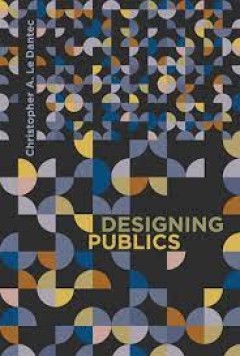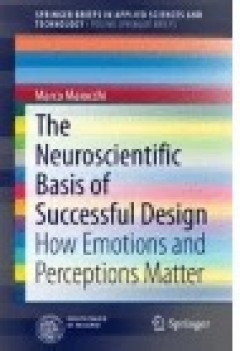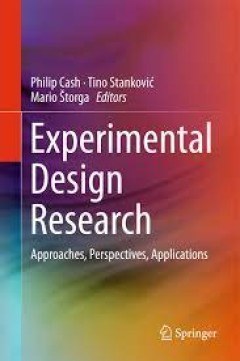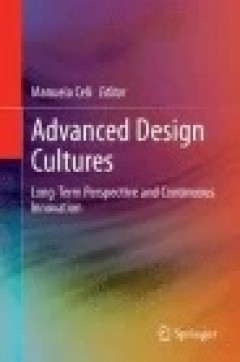Filter by

Design, when everybody designs : an introduction to design for social innovation
In a changing world, everyone designs: each individual person and each collective subject, from enterprises to institutions, from communities to cities and regions, must define and enhance a life project. Sometimes these projects generate unprecedented solutions; sometimes they converge on common goals and realize larger transformations. As Ezio Manzini describes in this book, we are witnessing…
- Edition
- -
- ISBN/ISSN
- 9780262328630
- Collation
- 1 online resource (xiv, 241 pages) :illustrations.
- Series Title
- -
- Call Number
- -

Designing publics
Contemporary computing technologies have thoroughly embedded themselves in every aspect of modern life -- conducting commerce, maintaining and extending our networks of friends, and mobilizing political movements all occur through a growing collection of devices and services designed to keep and hold our attention. Yet what happens when our attention needs to be more local, collective, and focu…
- Edition
- -
- ISBN/ISSN
- 9780262337083
- Collation
- 1 online resource (xv, 151 pages).
- Series Title
- -
- Call Number
- -

Victor Papanek :designer for the real world
"A cultural geneaology of the influence of Victor Papanek on the world of transdisciplinary design"--OCLC-licensed vendor bibliographic record.
- Edition
- -
- ISBN/ISSN
- 0262361590
- Collation
- 1 online resource.
- Series Title
- -
- Call Number
- -

American design ethic :a history of industrial design to 1940
What is uniquely American about American design? This first history of American products and the philosophy behind their design, use, and manufacture points to the process - the interaction between industrial technology and culture - that gave form to an American ""ethic"" in material products and helped shape the life style of its citizens.Pulos discusses the influences and fashions as well as…
- Edition
- -
- ISBN/ISSN
- 0262368102
- Collation
- 1 online resource (441 pages) :illustrations.
- Series Title
- -
- Call Number
- -

The Neuroscientific Basis of Successful Design
The term “design” today encompasses attributes of artifacts that go beyond their intended functions, imbuing them with new meanings. Those meanings are deeply related to the emotions perceived by the users. This book investigates the findings deriving from the neurosciences that are relevant to design. Drawing upon up-to-date neuroscientific knowledge, the authors define what an emotion is,…
- Edition
- -
- ISBN/ISSN
- 978-3-319-02801-9
- Collation
- XIV, 108
- Series Title
- SpringerBriefs in Applied Sciences and Technology
- Call Number
- -

Experimental Design Research
This book presents a new, multidisciplinary perspective on and paradigm for integrative experimental design research. It addresses various perspectives on methods, analysis and overall research approach, and how they can be synthesized to advance understanding of design. It explores the foundations of experimental approaches and their utility in this domain, and brings together analytical appro…
- Edition
- -
- ISBN/ISSN
- 978-3-319-33781-4
- Collation
- 26 b/w illustrations, 43 illustrations in colour
- Series Title
- -
- Call Number
- -

Advanced Design Cultures: Long-Term Perspective and Continuous Innovation
This book describes new thinking and practice in Advanced Design (ADD) – design that is not merely highly developed but anticipates the future by envisioning novel products and processes. The focus is especially on the front end of innovation and the search for solutions in complex pioneering processes using design-related tools and practices. The book opens by describing these tools, the app…
- Edition
- Ed. 1
- ISBN/ISSN
- 978-3-319-08602-6
- Collation
- IX, 169
- Series Title
- -
- Call Number
- 620.004 ADV a

Emotional Engineering (Vol. 3)
This book examines how theories of human emotion can be applied to engineering in order to improve product design and value. ‘Emotional Engineering Vol. 3’ establishes the idea that customer satisfaction can be maximised by using knowledge and experience in a more flexible manner to respond to a fast-changing world. This integration of emotion and knowledge introduces the reader to the conc…
- Edition
- -
- ISBN/ISSN
- 978-3-319-11555-9
- Collation
- 19 b/w illustrations, 45 illustrations in colour
- Series Title
- -
- Call Number
- -

Biologically Inspired Robotics
Robotic engineering inspired by biology—biomimetics—has many potential applications: robot snakes can be used for rescue operations in disasters, snake-like endoscopes can be used in medical diagnosis, and artificial muscles can replace damaged muscles to recover the motor functions of human limbs. Conversely, the application of robotics technology to our understanding of biological systems…
- Edition
- -
- ISBN/ISSN
- 9781439854976
- Collation
- -
- Series Title
- -
- Call Number
- -
 Computer Science, Information & General Works
Computer Science, Information & General Works  Philosophy & Psychology
Philosophy & Psychology  Religion
Religion  Social Sciences
Social Sciences  Language
Language  Pure Science
Pure Science  Applied Sciences
Applied Sciences  Art & Recreation
Art & Recreation  Literature
Literature  History & Geography
History & Geography